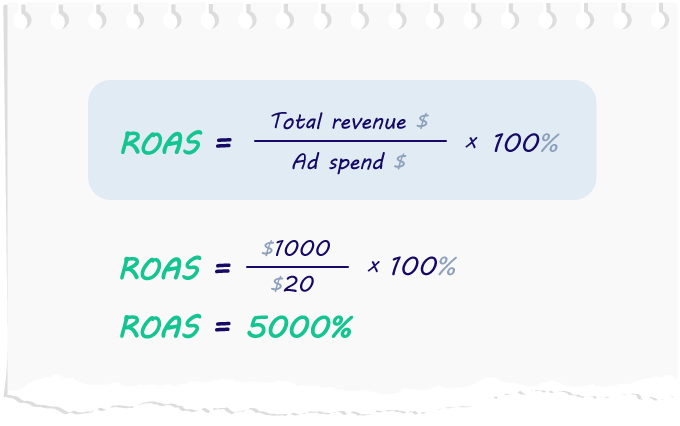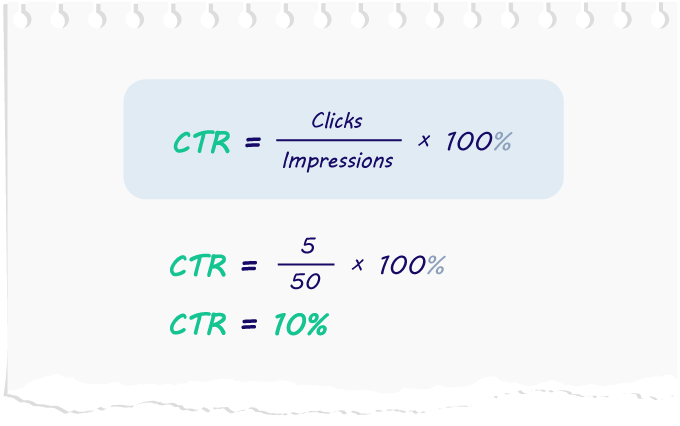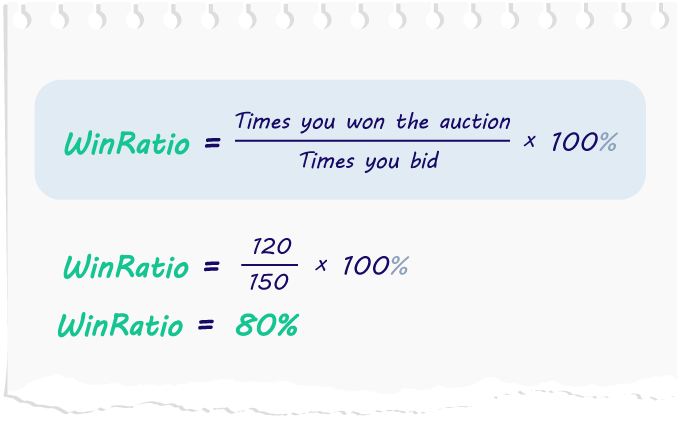The world of digital advertising is the ultimate data-driven environment. Could you even imagine running an affiliate marketing business without tracking data? With no metrics or KPIs to analyze and optimize your advertising efforts?
And no, it’s not going to be another article preaching why tracking matters…though it obviously does. Deal with it.
This article is going to tell you all about the top metrics a clever affiliate should always keep track of to get their ROI green.
Naturally, terms like KPIs and metrics aren’t unique to affiliate marketing. Whatever business, digital or not, one would always set goals and identify means to achieve them. And that’s essentially what KPIs and metrics are. But let’s dig a bit deeper, shall we?
1. What are affiliate marketing metrics and KPIs?
First, let’s make one thing clear — metrics and KPIs are not the same things. Yes, it’s true that KPI may be actually a metric, but not every metric is a KPI. So what’s the difference exactly?
KPI – Key Performance Indicator
KPIs, meaning the Key Performance Indicators, tell us if what we’re doing is effective or not. It’s a way of measuring results and comparing them against our business objectives. To simplify, in affiliate marketing, that could mean breaking even or having a positive total ROI of all of our campaigns.
Now, making our affiliate business profitable, at whatever rate, is our KPI. Whereas the said ROI is an example of various metrics that measure the progress of reaching the set goals.
Affiliate Marketing Metrics
There can be as many kinds of metrics as you wish. Each business cares for different things, hence will measure the overall performance of its ventures using different methods. And since affiliate marketing is a very much data-driven environment, as we’ve already established, it too has its top metrics and generic KPIs.
Naturally, there are some metrics that budding affiliates are always told to pay close attention to, and the ones that super-affiliates simply can’t imagine running their business without.
Where does such distinction come from? Well… it all depends on someone’s experience, budget, the scale of your affiliate business, as well as the type of campaigns you’re running, and your optimization strategy. We’ll get to the optimization part in a bit, but at this point, we need to ask one more question.
If monitoring metrics and KPIs is so important to the success of your affiliate business, you need the data first. You basically need to gather as much relevant data as possible to have something to base your analysis and assumptions on.
And if you need a more detailed explanation of why collecting data is crucial for your affiliate marketing business then yes… here we go again! Read below to learn why tracking matters.
2. Why is it important to keep track of your metrics?
Knowledge is power!
First and foremost, if you don’t keep track of your campaign’s performance, how will you know if you’re making money or losing it? And it’s not as simple as that, it’s also about not letting that figures-making opportunity fly past you, under your very own nose, without even knowing about it. Can you feel it yet? Yep, that’s ROMO slowly creeping in… and it should! So that you don’t miss out on the next business opportunity that came by unnoticed due to the lack of relevant data.
Time is money!
Then, once you’re already an accomplished marketer, there’s probably a lot going on in your calendar. And the more campaigns you run, the more difficult it is to know what’s happening with every single one of them. That’s why keeping your metrics recorded in one place allows you to save both time and money while increasing the efficiency of your business. Also, allowing to make sure no opportunity is missed!
Automation helps!
But hey, who said it can’t get even better than that? Having your data and metrics stored in one place is surely a benefit already. What about AI-powered tools to aid you with campaign optimization? Or letting you skip on mundane, repetitive tasks that can easily be done by quite cleverly programmed algorithms? Though in order for such tools to work, again, you need to collect the data first.
Precision is key!
Yes, being as precise with your campaign targeting and optimization allows you to reach the right people at the right time. And that precision is precisely what gets you conversions. So how can you get closer to that perfect aim? Simply collect as much data as possible, optimize, analyze, and observe trends — both positive and negative. This method will allow you to skip on unprofitable placements while letting you focus on areas that prove to be profitable. Then again, one needs something to analyze and observe first, right?
Fair enough, in that case, you should be ready to optimize your campaigns to profitability in no time! Unless you still haven’t collected enough relevant stats…

3. Where to get relevant data from? It’s TRACKING time!
So where does one get all this necessary data from? Well, it’s not like you’ve got to order it, it’s right there where it’s been all the time. In your traffic source platform, your affiliate network or a direct program, your anti-fraud solution, your other traffic source platform, and another affiliate network… or best, in your affiliate ad tracker.
Yes, having all this data coming from various sources stored and featured in one place, that is in a tracking solution of your choice, is a huge help to affiliate advertisers.
No matter what ad tracker is your favorite, they all offer a set of basic features that can hugely help with simple day-to-day processes. And if you’re an affiliate savvy, then surely choosing a solution that’s ultimately suited to your needs is the best thing you can ever do for your business.
4. List of affiliate marketing metrics
Since we’ve agreed that collecting data, preferably with the help of a proper tracking solution, is necessary to the success of your business ventures, let’s talk metrics now.
We’ve mentioned that there are various kinds of items to focus on depending not only on the business you’re in, but also your level of experience, especially if we’re talking about affiliate marketing. That’s why we’ve collected a list of various affiliate marketing metrics and then grouped them into separate categories.
Please note that it’s not a complete and final list of all available affiliate marketing metrics!
And if you’re wondering why, the answer is simple yet quite satisfying. Both traffic sources and trackers, as well as other affiliate marketing tools, keep being developed, and new solutions/features/metrics and possibilities to enhance the performance of your business are being continuously added.
Let’s have a look at the grouped metrics, then.
Overall metrics
The following metrics are out together as group number one due to their paramount importance… but also a very general scope. They’re almost the end product of your marketing efforts, yet if green — all is well!
ROI (Return On Investment) — tells you whether your campaign is profitable or not. It’s actually a percentage of the money you made, as a fraction of what you’ve invested in.
- If ROI equals 0% then you’re even, meaning you haven’t lost any money, but you also haven’t earned any. The investment simply paid back, but without any profit.
- If ROI is greater than 0% then you’ve made profit. If your ROI is 200%, then you’ve doubled the amount you’ve initially invested.
- If ROI is lower than 0% then it means that you’ve lost money since you spent more than you earned.
You can calculate it using the following formula:

ROAS (Return On Ad Spend) — measures the efficiency of a digital advertising campaign. Though similar to ROI, it refers only to the cost of an ad campaign versus the overall investment that might be counted in ROI.
You can calculate it using the following formula:

CR (Conversion Rate) — is one of the most important metrics, also responsible for determining campaign performance. It shows the percentage of people who converted (performed the desired action) after engaging with your ad or a landing page, versus the number of all clicks. Including those that brought conversions and those that didn’t.
Mind that the nature of a conversion depends on your offer and may mean various actions.
You can calculate it using the following formula:

Basic campaign metrics
These are simple metrics telling you how many times and how users interacted with your ads.
Visits/Views — a number of visits/views of your ads
Clicks — a number of total clicks on your ads
Unique clicks — a number of unique clicks on your ads
Conversions — a number of times the desired action was completed by users upon clicking your ads
Budget and bidding metrics
The following metrics give you various information regarding your campaign budgets and set bids, as well as money your ads made.
CPC (Cost Per Click) — is a cost model in which you pay for each visitor’s click on an ad.
CPV (Cost Per View) — is a cost model in which you pay for each impression of an ad. For example, if you’re an affiliate advertiser, that cost model is available on pop and domain traffic in Zeropark.
CPM (Cost Per Mille) — is a cost model in which you pay for a thousand impressions. Mille means a thousand. Applies in the same situation as CPV.
eCPA (Effective Cost Per Action) — tells you how much money it takes for your campaign on average to acquire a conversion.
Bids — the amount of money you’re ready to spend on an RTB auction to have your ad displayed.
Payout — the amount of money an affiliate network or program pays you for acquiring a conversion.
Revenue — the total amount of money you earn from running a campaign (includes both spend and profits).
Profit — the amount of money you earn after deducting all costs associated with it.
Optimization metrics
These may not come to everyone’s mind when discussing metrics, yet are equally important while assessing the campaign’s performance and profitability.
Source — although the terminology may vary depending on the traffic source (and we’ll obviously use the Zeropark one), it is essentially a single publisher who displays your ads. One source may contain several targets.
Target — is a single traffic placement (also known as target ID or site ID, depending on the naming) from a given publisher.
Monitoring the performance of sources and/or targets is essential to understanding if your campaign has a chance of turning profitable or not. Depending on the performance, sources/targets can be paused, resumed, or one can bid up to win more traffic if they look promising.
Keywords — similarity as with sources and targets, certain keywords should be paused, resumed, or bid up on to win more traffic if they look promising.
CTR (Click Through Rate) — tells you what percentage of users click on your ads, compared to how many times a given ad was actually displayed to a user.
You can calculate it using the following formula:

WinRatio — tells you the percentage of how many times you have bid on a given source/target/, and how many times you have actually won the auction and got your ad displayed.

Landing page views/clicks/CTR/CR — same metrics as described above, only referring to a single landing page.
For example, a Landing Page CTR would be a measure of how many times a landing page was displayed to a user, and how many times a user clicked on it.
Ad Creative views/clicks/CTR/CR — same metrics as described above, only referring to a single ad creative.
For example, an ad creative CTR would be a measure of how many times it was displayed to a user, and how many times a user clicked on it.
Anti-fraud metrics
These may vary depending on the anti-fraud solution you’re using.
Suspicious views — a collection of data that may indicate fraudulent activity. For example, showing the percentage of visits flagged as suspicious.
Suspicious clicks — a collection of data that may indicate fraudulent activity. For example, showing the percentage of clicks flagged as suspicious.
Targeting metrics
GEO — information on where users are located based on their IP address. It’s actually a location of a user’s device that is connected to the Internet and based on that a country, region, city, and Internet Service Provider (ISP) of such device may be identified.
Adult/Non-Adult (Mainstream) — information on the type of traffic supplying a given campaign. The distinction is made between adult traffic (allowing both adult and mainstream content) and a mainstream only, where no adult content is allowed.
Day parting — a collection of data telling you the times of the day when ads are shown to users. Useful for distinguishing the most and least profitable set up.
Frequency filtering — a collection of data telling you how many times per given time unit ads are shown to users. Useful for distinguishing the most and least profitable set up.
Device — statistics on the performance of your campaigns when run with desktop or mobile traffic.
OS/ OS version — statistics on the performance of your campaigns when targeted per given Operating system or Operating system version.
Browser — statistics on the performance of your campaigns when targeted per given browsers (mobile or desktop).
Carrier — statistics on the performance of your campaigns when targeted per given mobile carriers.
IP/ ISP — statistics on the performance of your campaigns when targeted per given IP addresses or Internet service providers.
Having so many items to monitor may seem daunting, but please note that these come from general ones to analyzing very precise and detailed information. Depending on your goal, or the information you’re searching for, you’d be looking at various stats and figures.
Click here to learn more about optimization with whitelists and blacklists

5. How to read data — top metrics and insights.
Once we’ve gone through a list of affiliate marketing metrics, now it’s time to learn more about what some of them can tell us. Knowing how to read such data and how to analyze them to understand what’s happening with our campaign is the key to success in affiliate marketing.
Understanding your CTR (Click Through Rate)
CTR will definitely help you identify the level of audience engagement with your ads. Theoretically, the higher CTR, the higher the engagement rate. Also theoretically speaking, it should mean that the higher the CTR the closer you are to scoring conversions. And that’s partially true. But not entirely.
CTR varies depending on the overall performance of your campaign, so there is no desired or fixed number that tells if you’re successful or not.
It can also tell us what or where to improve. If we’re not getting any conversions, we should be looking at the CTR on individual sources/targets/landing pages or ad creatives. Analyze which show the highest CTR, and focus on those while leaving out the poor-performers.
Sometimes, though, high CTR and no conversion may indicate that the ad is somewhat misleading to users. So, while it initially catches the user’s attention, it fails to deliver what it promises, hence no conversions.
If you’d like to increase your CTR, while keeping track of the number of conversions, always focus on the performance of ad creatives. Test them, rotate them to keep them fresh, play with the copy and variation.
Understanding your WinRatio
This time it’s easier to estimate the desired number. Ideally, that’d be 100%. It’d mean that whatever bid you’ve set, you’re winning all the traffic coming from a given source or target.
In that case, it could also mean that your bid might be too high, and you’re actually overpaying. And spending too much money on something you could’ve got at a cheaper price is not according to the affiliate rule.
The ideal Win Ratio percentage is often estimated between 70% to 90%.
It’s important to keep track of it as Win Ratio helps you analyze the traffic and see which sources or targets (and traffic filters) are performing best for your campaigns.
Setting up custom bids on sources/targets to better manage budget spend is also a good addition to optimizing your Win Ratio, and thus the overall campaign performance.
Having a strong Win Ratio will definitely help your campaigns, as it means you’re able to win ad traffic over your competitors.
Understanding your eCPA (Effective Cost-Per-Action)
Understanding your eCPA, so your average cost per conversion is essential to ensuring your campaign’s profitability. Always aim to have an eCPA lower than your payout.
Also, when monitoring your campaign, it is important to look at the Win Ratio not only on the overall campaign but also for individual sources or targets to better improve the eCPA.
But if you don’t want to spend much, don’t keep your bid low. Instead, try an alternative campaign setup. You can surely make an offer work with a smaller campaign budget if run in a cheaper GEO (Tier 3 for example).
Also, make sure you’re able to spread the budget evenly throughout the month so as to ensure a steady cash flow.
Knowing how to read such data and how to analyze it to understand what’s happening with our campaign is the key to success in affiliate marketing. You don’t need to have completed a data analyst training program to use and understand these tools.

Understanding your Revenue & Profit
The more we invest, the more we’d be able to earn. It’s simple and very true. Yet nothing is simple in affiliate marketing, and there’s always some volatility to every case.
Some argue that the higher the revenue the higher the earnings. Other experts (as recently discussed by Twinaxe, the STM forum moderator, in response to our article on budgeting, bidding, and investing) claim that we should always focus on ROI and nothing else. For those who can’t decide which approach is better (when they’re both brutally honest and right), it’s best to carefully analyze and observe their campaigns to make the best decisions for the situation they’re in.
Situation A: Running a higher Tier GEO and a more expensive offer? The ROI could go down, though the additional revenue coming from the higher volumes of traffic could make up for the difference.
Situation B: Or what if you can’t spend more, you reached your maximum budgets and the only thing you can do now is try optimizing campaigns to get even more quality traffic for the same price? You’ve got no choice but to aim for higher ROI.
Situation C: But then again, focusing on revenue rather than profits becomes sensible when our campaigns are doing well enough to win bigger volumes. Then, profits from a much bigger amount of received traffic, even if with lower ROI, surpass the profits from the situation B.
In that case, that is situation C, the more money you pour into your campaign, the more traffic you win, the more money you make. The amount of money you make is simply more convincing, even if with a lower ROI percentage.
So, if you’re a beginner, remember that it’s mostly easier to find cheaper offers and run campaigns that bring you smaller revenue, but with decent ROI percentages. For example, $20 revenue a day, with a 120% ROI.
But if you’re an affiliate savvy, and you’re able to find campaigns that bring more revenue while showcasing lower ROI, then why not? For example, $1000 in revenue a day at 120% ROI.
If you think you are ready for some more advanced affiliate marketing strategies then check out this article to elevate your campaigns.
Knowing how to read the metrics and understanding collected data is essential to making your affiliate marketing business not only profitable, but most importantly, sustainable.
Read Your Data Well & Run Ads That Convert!
Launch Your Campaign In Zeropark Now
Kinga Gawron


